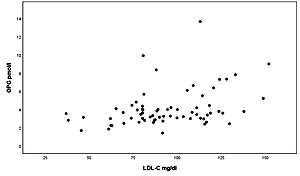Current issue
Archive
Manuscripts accepted
About the Journal
Editorial office
Editorial board
Section Editors
Abstracting and indexing
Subscription
Contact
Ethical standards and procedures
Most read articles
Instructions for authors
Article Processing Charge (APC)
Regulations of paying article processing charge (APC)
PEDIATRICS / RESEARCH PAPER
Serum osteoprotegerin and cardiometabolic risk factors in overweight and obese children
1
Medical University of Warsaw, Department of Paediatrics and Endocrinology, Poland
2
Medical University of Warsaw, Department of Laboratory Diagnostics and Clinical Immunology of Developmental Age, Poland
Submission date: 2021-02-19
Final revision date: 2021-07-11
Acceptance date: 2021-07-21
Online publication date: 2021-08-22
Corresponding author
Małgorzata Rumińska
Medical University of Warsaw, Department of Paediatrics and Endocrinology, Żwirki i Wigury 63A, 02-091, Warsaw, Poland
Medical University of Warsaw, Department of Paediatrics and Endocrinology, Żwirki i Wigury 63A, 02-091, Warsaw, Poland
KEYWORDS
TOPICS
ABSTRACT
Introduction:
Osteoprotegerin has been shown to play a role in vascular calcification, atherosclerosis and the pathogenesis of cardiovascular diseases. We aimed to evaluate whether excess fat mass affects serum osteoprotegerin concentrations and to evaluate its associations with chosen cardiometabolic risk factors in overweight and obese children.
Material and methods:
We enrolled 105 children ranging from 7.0 to 17.8 years of age. Among them 70 individuals were overweight and obese, and 35 were healthy with normal physical parameters. In all patients, anthropometric measurements and laboratory tests were performed. Atherogenic and insulin resistance indices were calculated.
Results:
We did not find any differences in serum osteoprotegerin concentrations between overweight and obese children and their lean peers. In all studied patients, together with elevated quartiles of osteoprotegerin concentration, insulin resistance status decreased, and low-density lipoprotein cholesterol concentration increased. In the group of overweight and obese children osteoprotegerin was associated with low-density lipoprotein cholesterol, total cholesterol, and non high-density lipoprotein cholesterol. In the multiple linear regression analysis osteoprotegerin correlated only with low-density lipoprotein cholesterol (β = 0.140, p = 0.005).
Conclusions:
Insulin resistance and lipid profile seem to influence circulating osteoprotegerin levels, but most likely needs more time to change its concentration in overweight and obese patients. The association of osteoprotegerin with low-density lipoprotein cholesterol may suggest its link with atherogenesis.
Osteoprotegerin has been shown to play a role in vascular calcification, atherosclerosis and the pathogenesis of cardiovascular diseases. We aimed to evaluate whether excess fat mass affects serum osteoprotegerin concentrations and to evaluate its associations with chosen cardiometabolic risk factors in overweight and obese children.
Material and methods:
We enrolled 105 children ranging from 7.0 to 17.8 years of age. Among them 70 individuals were overweight and obese, and 35 were healthy with normal physical parameters. In all patients, anthropometric measurements and laboratory tests were performed. Atherogenic and insulin resistance indices were calculated.
Results:
We did not find any differences in serum osteoprotegerin concentrations between overweight and obese children and their lean peers. In all studied patients, together with elevated quartiles of osteoprotegerin concentration, insulin resistance status decreased, and low-density lipoprotein cholesterol concentration increased. In the group of overweight and obese children osteoprotegerin was associated with low-density lipoprotein cholesterol, total cholesterol, and non high-density lipoprotein cholesterol. In the multiple linear regression analysis osteoprotegerin correlated only with low-density lipoprotein cholesterol (β = 0.140, p = 0.005).
Conclusions:
Insulin resistance and lipid profile seem to influence circulating osteoprotegerin levels, but most likely needs more time to change its concentration in overweight and obese patients. The association of osteoprotegerin with low-density lipoprotein cholesterol may suggest its link with atherogenesis.
Share
RELATED ARTICLE
We process personal data collected when visiting the website. The function of obtaining information about users and their behavior is carried out by voluntarily entered information in forms and saving cookies in end devices. Data, including cookies, are used to provide services, improve the user experience and to analyze the traffic in accordance with the Privacy policy. Data are also collected and processed by Google Analytics tool (more).
You can change cookies settings in your browser. Restricted use of cookies in the browser configuration may affect some functionalities of the website.
You can change cookies settings in your browser. Restricted use of cookies in the browser configuration may affect some functionalities of the website.



